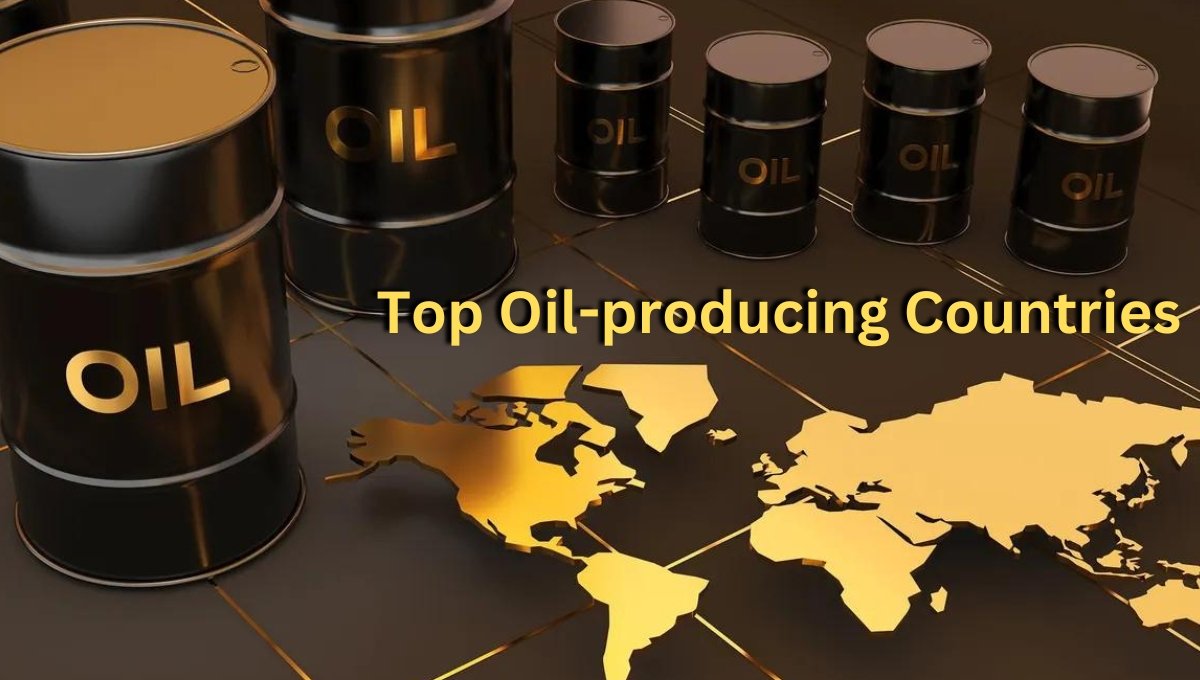Top 10 Oil-producing Countries (Updated 2024): Global oil production has continued to rise over the years. Here’s a look at the top 10 oil-producing countries.

The Impact of Global Events on the Oil Market
In recent years, the global oil market has faced unprecedented challenges due to various geopolitical and economic factors. The COVID-19 pandemic, price wars among oil-producing countries, Russia’s ongoing war in Ukraine, and conflicts in the Middle East have all played significant roles in shaping the current state of the oil industry.
COVID-19 and the Initial Rebound in Oil Demand
As the world began to recover from the COVID-19 pandemic, oil demand started to increase, leading to a rise in prices. However, just as the market was gaining momentum, Russia’s aggressive invasion of Ukraine in 2022 caused oil prices to spike dramatically. This surge was driven by fears of supply disruptions as Western countries imposed sanctions on Russian oil.
Economic Slowdown and OPEC’s Response
In 2023, concerns about a global economic slowdown, fueled by rising interest rates and fears of a recession, once again put downward pressure on oil prices. In response, OPEC members decided to significantly reduce oil output starting in July 2023 and extend production cuts into 2024. As of June 2024, OPEC has announced that these supply reductions will continue through 2025, aiming to stabilize the market.
Geopolitical Tensions in the Middle East
The ongoing Israel-Hamas conflict and attacks on oil tankers in the Red Sea by Houthi forces have added further uncertainty to the global oil market. These developments have raised concerns that the conflict could spread to other oil-producing nations in the Middle East. Despite these risks, the market has been somewhat stabilized by slowing demand forecasts from China and the resurgence of Venezuelan oil production.
Also Read: 2025 Volvo EX90: The Ultimate Electric Luxury SUV for Families
Oil Market Outlook: Analysts Remain Optimistic
Despite the volatility, oil market analysts remain optimistic about the sector’s future. According to OPEC projections, global oil demand is expected to grow by 2.25 million barrels per day (bpd) in 2024 and by 1.85 million bpd in 2025. This anticipated growth suggests continued strength in the oil market, providing support for prices in the coming years.
Top 10 Oil-Producing Countries
Given the complexities of the global oil market, many investors are keen to know which countries are leading in oil production. Here’s a look at the top 10 oil-producing nations in 2023, based on data from the Energy Information Administration (EIA).
Also Read: Best Divorce Lawyers in the United States: A Comprehensive Guide
1. United States
- Production: 21.91 million bpd
- Key Highlights: The US remains the world’s largest oil producer for the sixth consecutive year, with Texas leading as the top oil-producing state.
2. Saudi Arabia
- Production: 11.13 million bpd
- Key Highlights: Saudi Arabia holds 17% of the world’s proven petroleum reserves and is a major player in OPEC’s production decisions.
3. Russia
- Production: 10.75 million bpd
- Key Highlights: Despite sanctions and geopolitical tensions, Russia’s oil exports to China and India have remained strong.
4. Canada
- Production: 5.76 million bpd
- Key Highlights: Canada continues to expand its oil production capacity, with significant exports to the US and plans to diversify its markets.
5. China
- Production: 5.26 million bpd
- Key Highlights: China is both a leading producer and the world’s second-largest consumer of oil, with a strong influence on global demand.
6. Iraq
- Production: 4.42 million bpd
- Key Highlights: Iraq, the second-largest OPEC producer, faces challenges in increasing output due to infrastructure constraints.
7. Brazil
- Production: 4.28 million bpd
- Key Highlights: Brazil is on track to become one of the world’s top oil producers, contributing significantly to global supply growth.
8. United Arab Emirates
- Production: 4.16 million bpd
- Key Highlights: The UAE continues to be a key OPEC member, with plans to increase production capacity by 2027.
9. Iran
- Production: 3.99 million bpd
- Key Highlights: Iran’s oil production has grown despite sanctions, with a focus on exports to Asian markets.
10. Kuwait
- Production: 2.91 million bpd
- Key Highlights: Kuwait faces challenges in boosting production due to political and infrastructure issues.
Also Read: How Do Bitcoin ATMs Work? How to Use a Bitcoin ATM – A Step-by-Step Guide
Conclusion: The Future of Global Oil Production
The global oil market is complex and influenced by a myriad of factors, including geopolitical events, economic trends, and technological advancements. Understanding the dynamics of oil production and consumption is crucial for investors and policymakers alike as they navigate the challenges and opportunities in this ever-evolving industry.
FAQs: Understanding the Oil Industry
What is Crude Oil?
Crude oil is a naturally occurring liquid composed of hydrocarbons and other organic materials. It is extracted from underground reservoirs and is a key global commodity.
What are the Uses of Crude Oil?
Crude oil is refined into various products, including gasoline, jet fuel, kerosene, and lubricants. It is essential for numerous industries and everyday products.
Which Country Consumes the Most Oil?
The United States is the largest oil consumer, using about as much oil as China, India, and Japan combined.
How Many Years of Oil Reserves Are Left?
Estimating the exact number of years of oil reserves left is challenging, but current estimates suggest around 47 years based on known reserves and current consumption rates.
What is OPEC?
OPEC is the Organization of the Petroleum Exporting Countries, a group of 13 nations that coordinate and unify petroleum policies to ensure stable prices and fair returns for producers.
